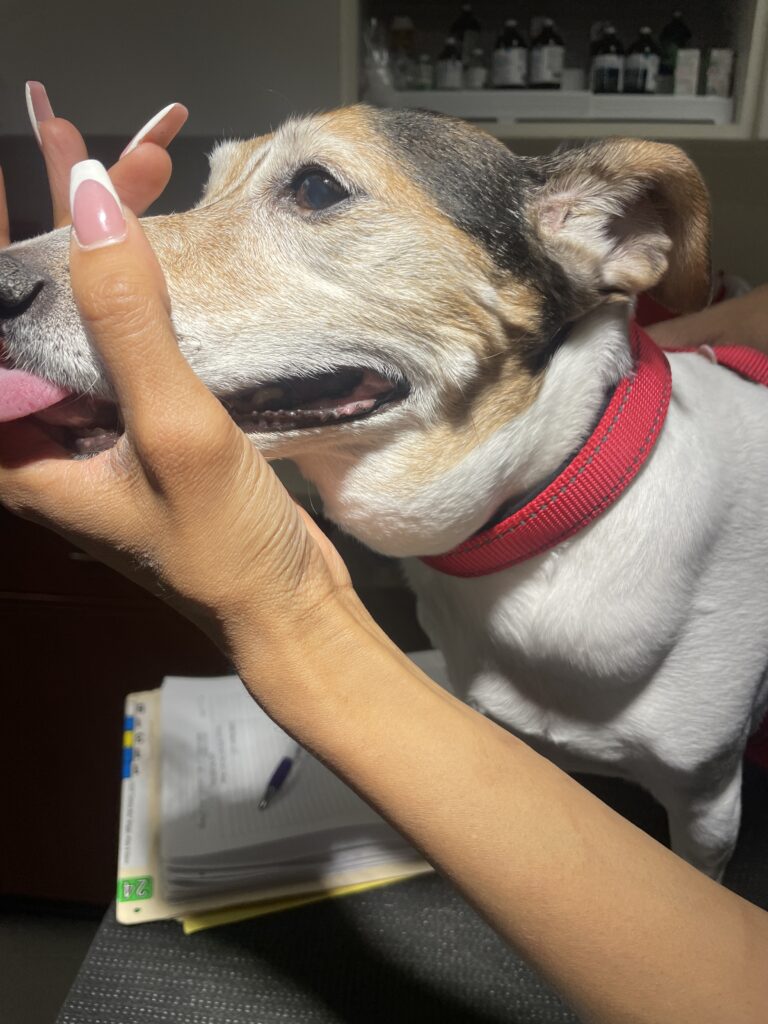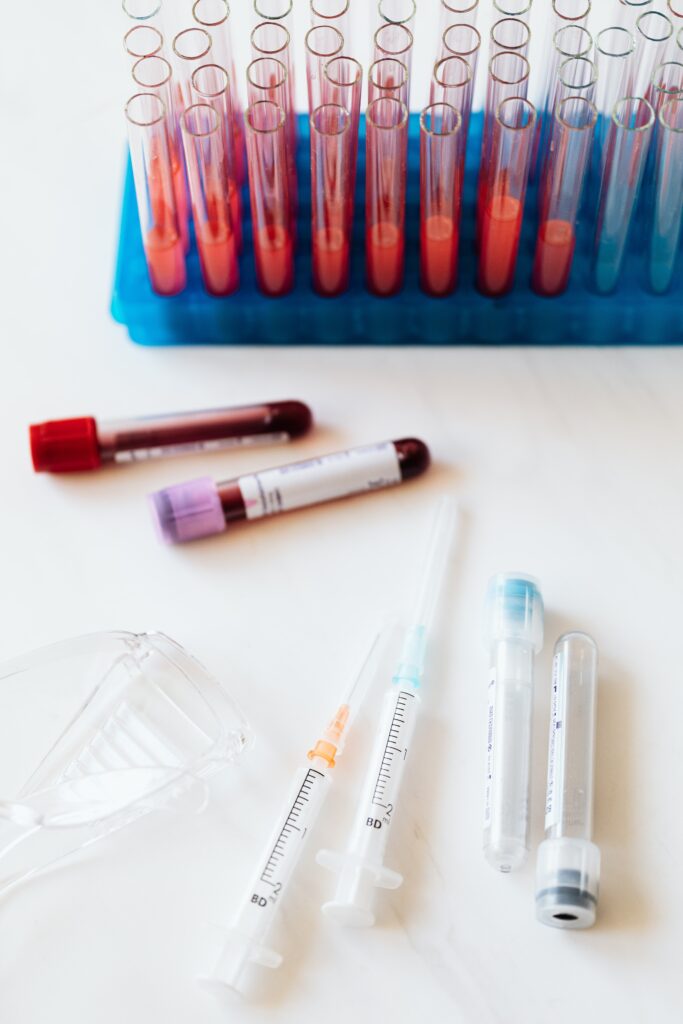Lymphoma is an aggressive cancer in dogs and cats. It is important to act quickly before the cancer becomes too advanced. There are many tests out there and this article will review the important ones to help navigate this challenging diagnosis.
Diagnosis
Physical Examination and Initial Tests

Most pets with lymphoma have enlarged lymph nodes. This may be noted at home or the veterinarian may find the lymph nodes enlarged during an exam. Fine-needle aspirate (FNA) and cytology, which is often 90% accurate.
- Fine-Needle Aspirate and Cytology
- This non-invasive test involves using a 22 to 25-gauge needle with a 6 ml syringe to collect cells from the lymph node. The “woodpecker technique,” which avoids using suction, is commonly used. It’s important to avoid mandibular lymph nodes, as dental diseases can make these nodes appear more reactive, complicating the cytology results. Care should be taken to handle the samples gently to prevent cell breakage. Pets generally tolerate FNAs well, similar to a blood draw.
- If a diagnosis cannot be obtained from cytology, a lymph node biopsy might be necessary.
Advanced Diagnostic Tests
- PCR for Antigen Receptor Rearrangement (PARR)
- PARR is used to determine if the lymphocytes are from a clonal population, indicative of cancer. This test is particularly useful when it is difficult to distinguish between lymphoma and reactive lymphocytes. PARR can be performed on previously submitted slides, so no new sample collection is required.
- Flow Cytometry
- This test provides more detailed information about the lymphoma and can be performed on peripheral blood or lymph node samples. Flow cytometry is superior to PARR for distinguishing between B cell and T cell lymphoma and evaluates multiple cell surface antigens, which can be linked to prognosis and treatment response.
Tests to Perform After a Lymphoma Diagnosis
Once lymphoma is diagnosed, additional tests help determine the overall health of the pet and stage of cancer

- Blood work
- Complete blood count and biochemistry profiles are essential. Elevated lymphocyte counts can indicate more aggressive lymphoma (stage V or leukemia). If there is an elevated lymphocyte count, a pathologist should review the bloodwork. Flow cytometry can also be performed on blood samples to check for CD34 antigen, associated with acute lymphoblastic leukemia and poor prognosis.
- Hypercalcemia is often linked to T cell lymphoma. Azotemia may result from hypercalcemia, kidney involvement, or dehydration. Elevated liver enzymes could indicate lymphoma, inflammation, or other conditions. Increased globulin levels are common in B cell lymphoma.
- Imaging
- Chest x-rays
- These can reveal further enlarged lymph nodes, as well as evaluating for a mediastinal mass. Cranial mediastinal mass is associated with T cell lymphoma.
- Abdominal ultrasound
- This can detect enlarged lymph nodes, gastrointestinal changes, as well as liver and spleen changes.
- Chest x-rays
What to Do After You Have the Test Results
After confirming a lymphoma diagnosis, it is vital to gather comprehensive information about the cancer. Oncologists have specialized training and can provide valuable insights. Pet Cancer Care Consulting offers partnerships with veterinarians to guide therapy and prognosis, ensuring the best decisions are made for each pet. We offer live video consultations with the pet owner and veterinarian, or detailed summaries with treatment recommendations can be provided.
Lymphoma is aggressive, but numerous treatment options are available. Pet Cancer Care Consulting aims to help pets receive timely and effective treatment, allowing families to make informed decisions. Visit our website to learn more and contact us directly for assistance.
For more detailed information or to schedule a consultation, please visit our website at Pet Cancer Care Consulting.

